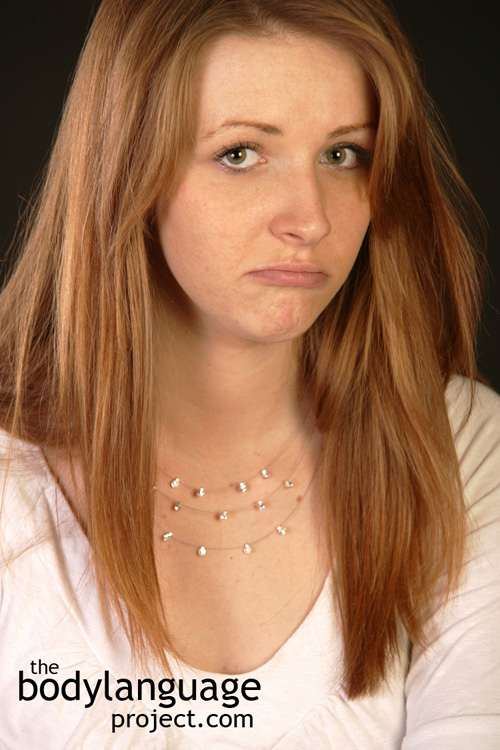This chapter focused on emotional body language. We began by discussing New York style body language called “displacement behaviour.” We saw that displacement behaviours include actions set to preoccupy in order to dehumanize the outside world – especially in more crowded areas. The list of behaviours included nail biting, gum chewing, grooming, tapping the does, head scratching or playing with jewelry, but can also mean looking and acting ‘out of touch’ or closed off.
Next, “fight or flight” was finally shifted to “freeze, flight or fight” finally putting it into the proper order. Following this was clenching behaviour where we found that actions such as gripping the wrist of the opposite hand in behind the back, or wringing the hands out like a wet article of clothing, are forms of restraint. We also hit on nervous hands and how shaking can tell us a lot about what sort of emotions a person is experiencing.
We then moved onto poor self image and the language that tells. Here we found that auto contacts including stroking the beard, rubbing the hands, tugging the ear, massaging the throat, pulling the fingers, rubbing the back of the neck and so forth, are linked to insecurity since they attempt to provide reassurance. We hit on eyebrow lowering and that when they are permanently lowered by the newly incarcerated it signifies easy prey for existing inmates. Interlaced fingers and palm finger stroking, on the other “hand”, were both labeled as emitted by those with negative thoughts. In the section on suckling and mouthing we saw that the mouth and lips provide a target for tactile gratification to provide comfort. Here we saw that anytime the fingers go to the mouth or lips to suckle, that our target is regressing to an infantile stage, and is trying to regain the security they felt as a child.
We found that compressed lips indicate stress, down-turned smile unhappiness, anger or tension, and lip pursing indicates that a thought, usually negative, is being processed. We found that tongues can depict deep concentration or a cheeky attitude, and that sneering signals contempt, disapproval and disrespect the world over. Ear language was covered next and we learned that ear grabbing refers to “hearing no evil” showing disbelief or an attempt to close off communication by blocking the ears. Hostile body language, on the other hand, was found to be more similar to sexual body language, but only in so much as the body language showed through figuratively onto ourselves when we would much rather inflict it onto others. Examples of such hostile body language included pulling or pinching at one’s own ears, cheeks, hair, or face. Next we covered the sequence by which bodies reject and then how they relax.
We discovered that the neck becomes particularly sensitive under pressure and like the cheeks, it becomes red and engorged with blood when we become nervous. Thus when people are under pressure they tend to touch or cover it so as to pacify. Women also tend to cover their “suprasternal notch” when they are experiencing anxiety. We found that people who don’t cross their legs are generally uncomfortable because crossing significantly reduces the ability to act quickly during confrontation and exit. Next we found that the eyes and the body can block unwanted thoughts and images, that blushing indicates emotion and anxiety, and that asymmetry can show when emotions are faked, gravity defying behaviours means people are happy, and that there are six universal facial expressions. We learned that asymmetry is what tells us honest expressions from fake ones. We also discovered that everyone, no matter how extroverted, requires emotional downtime, that timid people will cocoon and that guilty people will turtle. We also found in this chapter that full body hugs, where the chest and hips make contact, shows sexual intimacy, and that light hugs, where the shoulders touch shows friendship. Lastly we covered the “hug-ender cue” or the “tap out” that tells others that the hug has run its full course and one party wishes to submit. We concluded with a list of additional emotional body language.

